MINDGAMES: A theatrical enterprise
This graduate architecture thesis was developed at Submethod Lab at the Taubman College, University of Michigan with faculty Robert Adams and a host of expert collaborators from the School of Information, Center for Entrepreneurship, School of Art & Design, HKS Inc, and others in 2019.
Mind-Games seeks out new territories of alternate practice for architects in non-architecture industries within zones of human-made and natural conflict.
It dwells on two broad chapters. The first concerns investigating ways to kill the sinister comedy of architecture where the exploitative disciplinary practices of low financial returns, long work hours, unrealistic deadlines, monotonous work, and other factors that result from architects worshiping values that kills the growth of healthy and sustainable entrepreneurship. Through a plot twist, the second and main part attempts to co-invent ways to expand the value proposition of the architect by diversifying products, services, and roles, that infiltrate the work and workplace of other fields and disciplines.
Acts (Levels) of the game depicting the breadth of the project’s research concerns.
The Mind-Games progress through the staging of a puppet theatre in the context of an interpretational ‘board-game’ where different characters from the real world- non-architects and architects- and their puppet avatars interact with each other, with puppet architects, and with different sites of non-architecture professions, companies and natural and human-made conflict zones following different rules of the game. The real world characters present themselves as cards are drawn throughout the game. Each part, or act within the thesis, corresponds to a different level of the game. In the first two acts, puppet architects are tasked with the assassination of two notorious puppet masters- the artist and the ego-centrist influencing the architects, and freeing the imprisoned avatar of money. In the latter acts, successful entrepreneurs, companies, and conflict zones, such as - Walt Disney, Elon Musk, Sony corporation, the City of Aleppo and others - co-innovate and co-invent with the newly freed puppet architects in developing new value propositions. The game concludes as different value proposition diagrams are filled out as a result.\
Essentially, the thesis tries to hack the mind-games that are currently being played upon architects by architects, and attempts to twist the rules by crafting critical and playful Mind-Games through co-innovation and knowledge exploration regimes to bring financial and health equity to the discipline.
Location of different Sites within the Acts
Levels (Acts) & Sites
A1S1 + A1S2: The Sinister Comedy
Objective: Move to next act (level) or finish the most acts to gain most points before moving to the next scene.
Puppet architects move through spaces depicting different office situations as they roll the numbered die. This competitive act is a race to acquire the greatest number of points through engaging in design projects and experience in the puppet architects’ career. At one point, they will be confronted with a choice to either pay up all their points and exit the stage, or accept a promotion and move to scene 2. This voluntary choice will determine the next act for the specific puppet: exiting will lead to the next act (level of the game), and moving to scene 2 will lead to scene 1 again. For the player content with the status quo of the industry, this is where the game would end.
A2: Puppet Masters
Objective: Discover and unmask the puppet masters
Puppets navigate through tricks and surprises laid by the puppet masters in different spaces as they move through the back stage to catch the puppet regents and the puppet masters. This can either lead to them dying by falling into a bottomless hole, returning to A1, or continuing on to A3 in pursuit of the puppet master. Puppets depend on the numbered die to move. Tricks can comprise of the lure of authoring ones own book, or staging an exhibition or giving an interview, ignoring the bigger motive of arresting the puppet masters who stand for the harmful professional values; landing in any of these spaces will cost the puppet architects multiple moves.
If the puppets architects get stuck, they have the option to summon a masked puppet for help, who can either be friend or foe, depending on the card they pick from a given deck that would reveal the puppet’s identity. If discovered to be a foe, the architect puppets have to return to A1; if found to be a friend, they have a choice to skip to A4.
A3: Assassination
Objective: Trap and kill the puppet master
With the throw of the die, ninja puppets (previously puppet architects) band together and move in a collaborative pursuit through the backstage theatre world to assassinate the elusive puppet masters. The puppet masters move two spaces for every move by the ninja puppets. Both masters and puppet regents need to be killed, by one or more puppets for everyone to move to the next act. Once the puppets surround the masters, one of them needs to enter the same space to assassinate. Ninja puppets also need to free the demonised avatar of money to move to the next act.
A4: Plot Twist
Objective: Enter new worlds
Puppet ninjas enter the outside world through a path of their choosing.

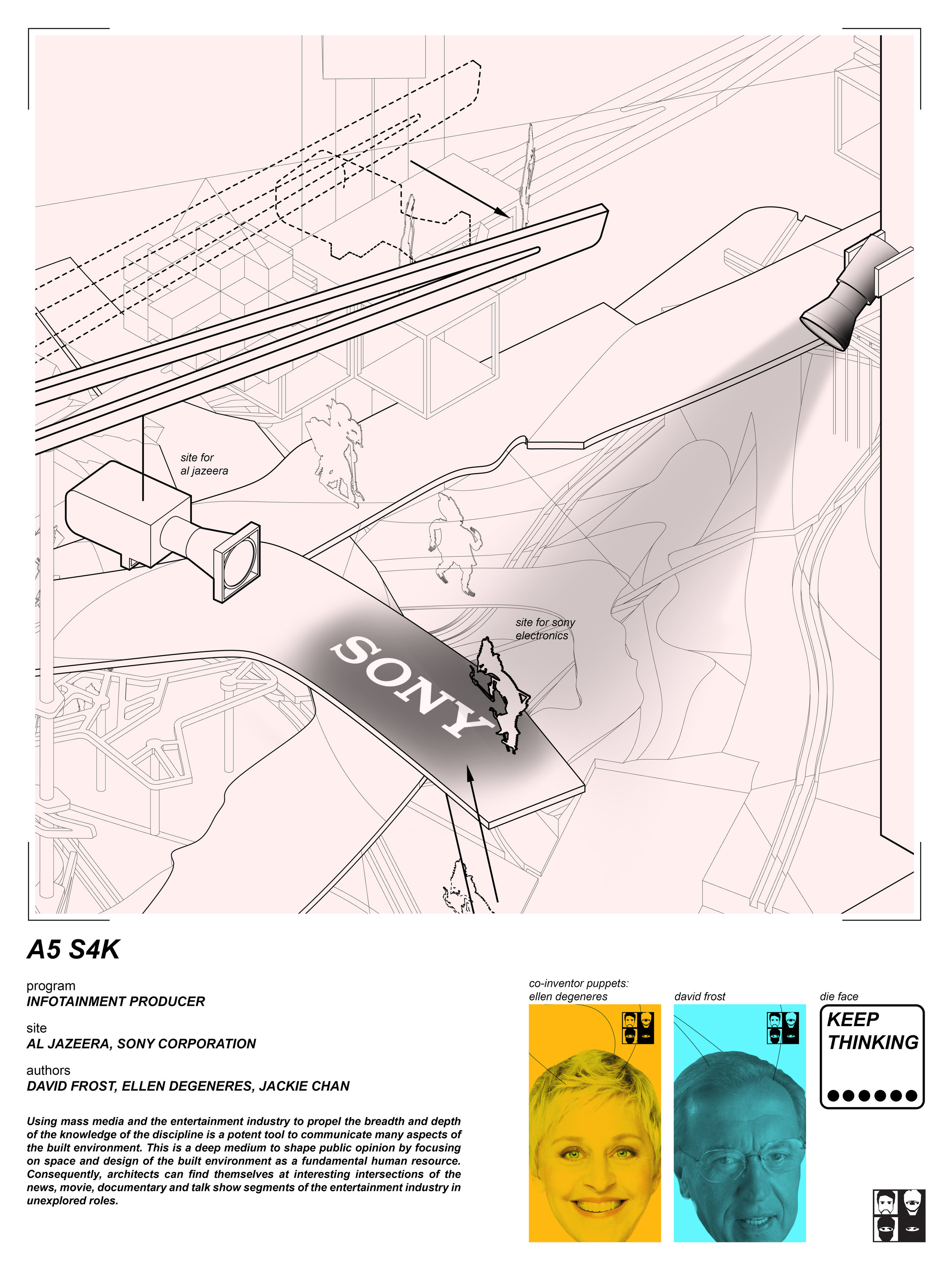
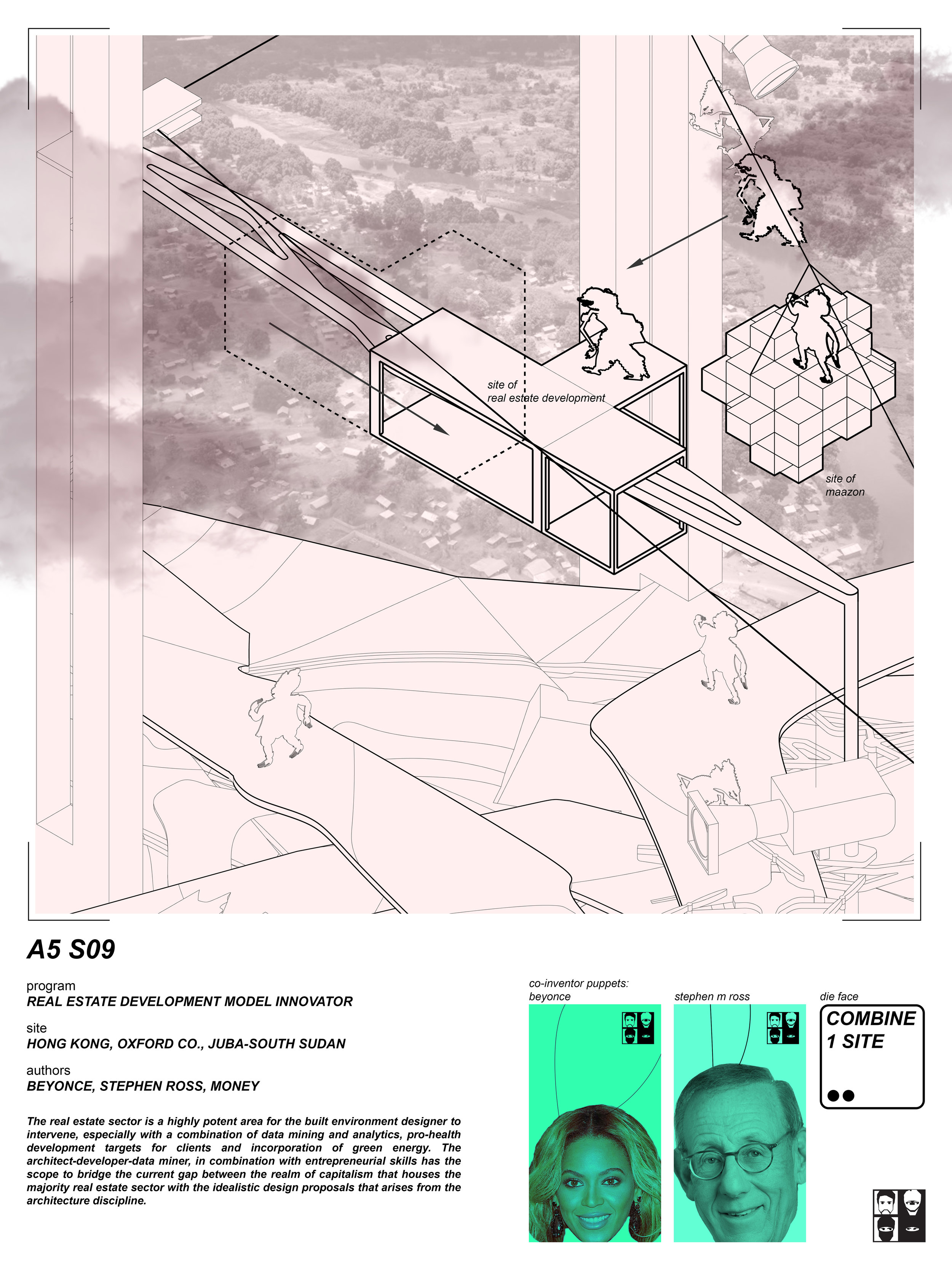
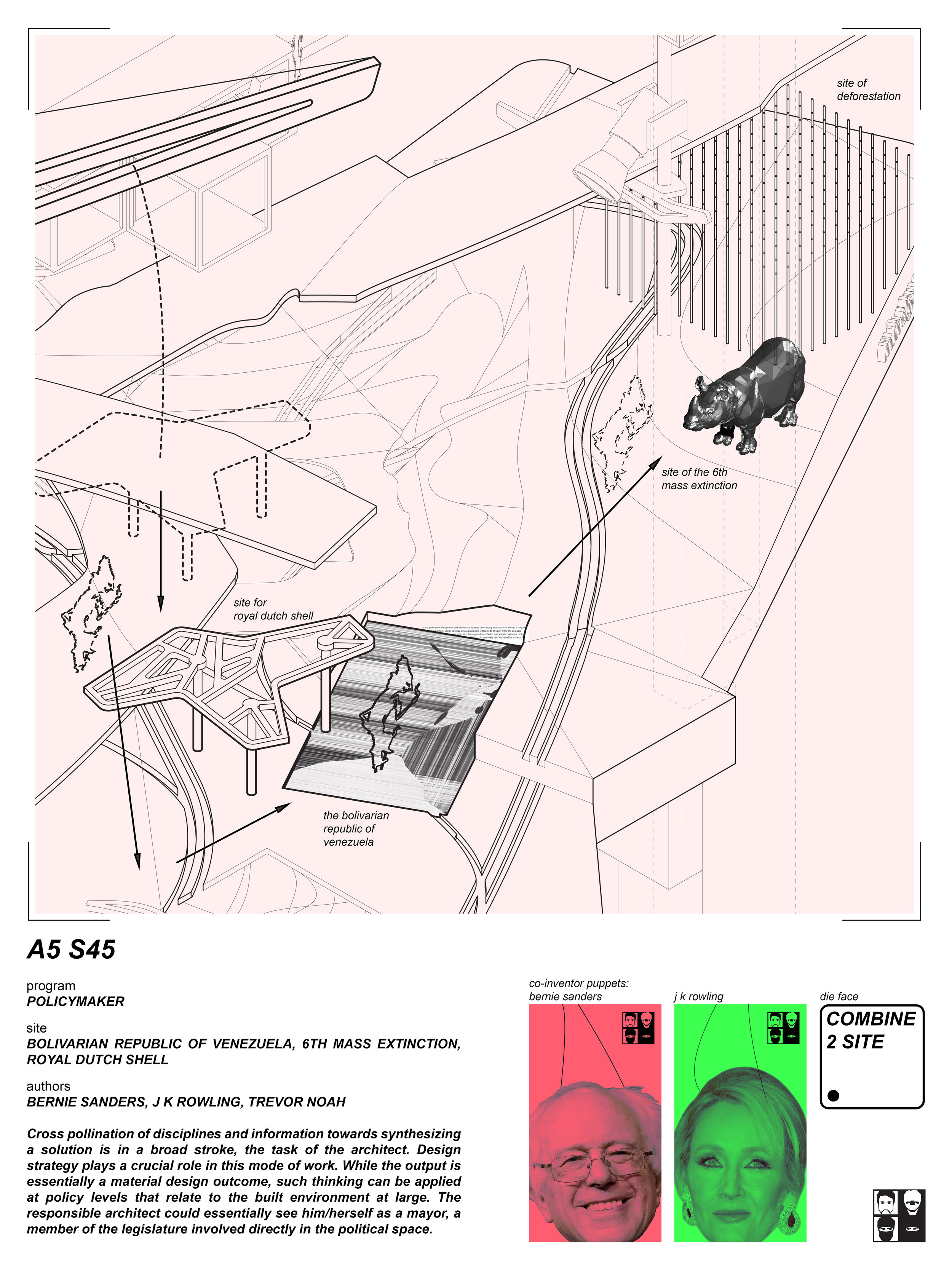
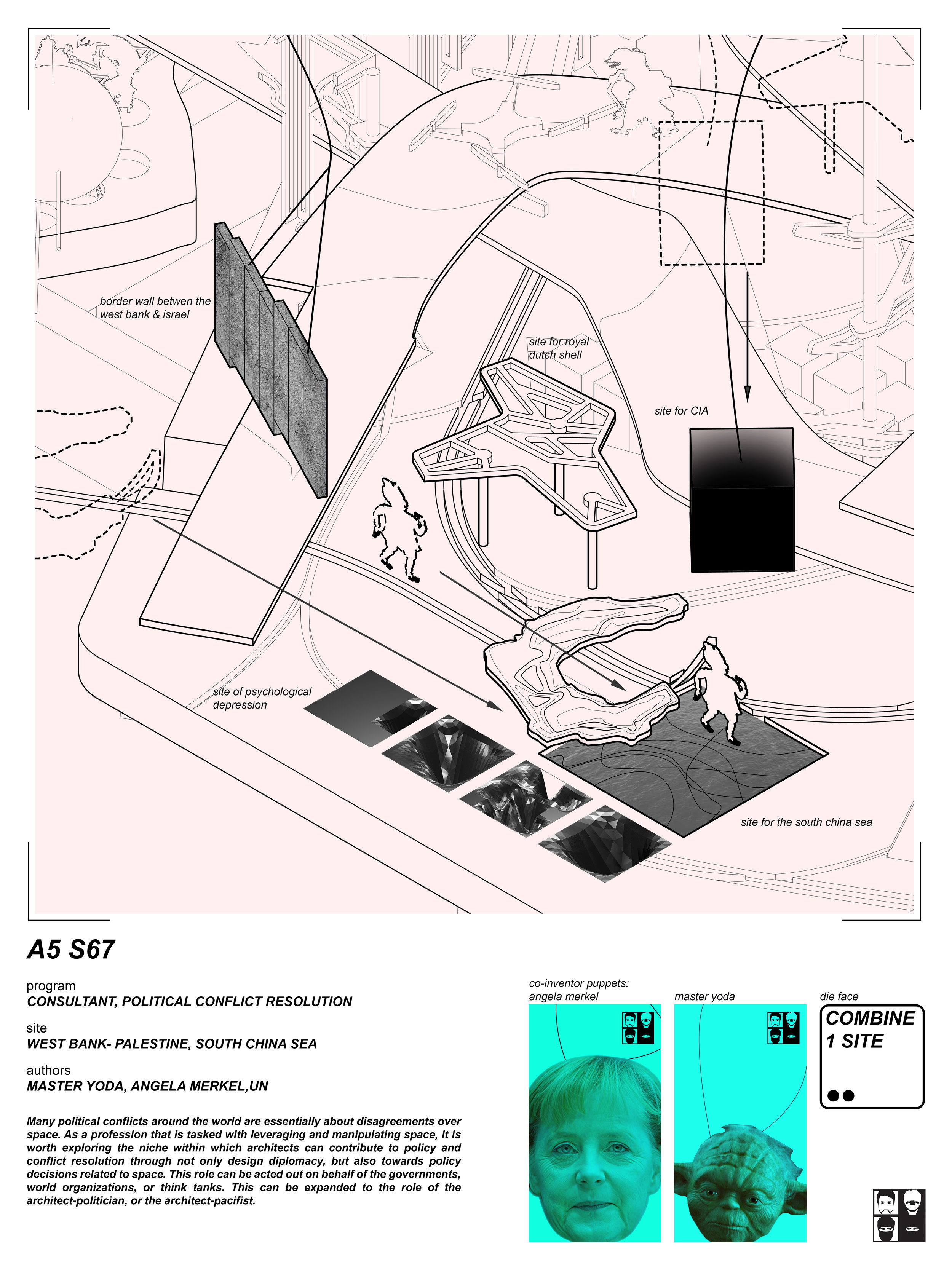
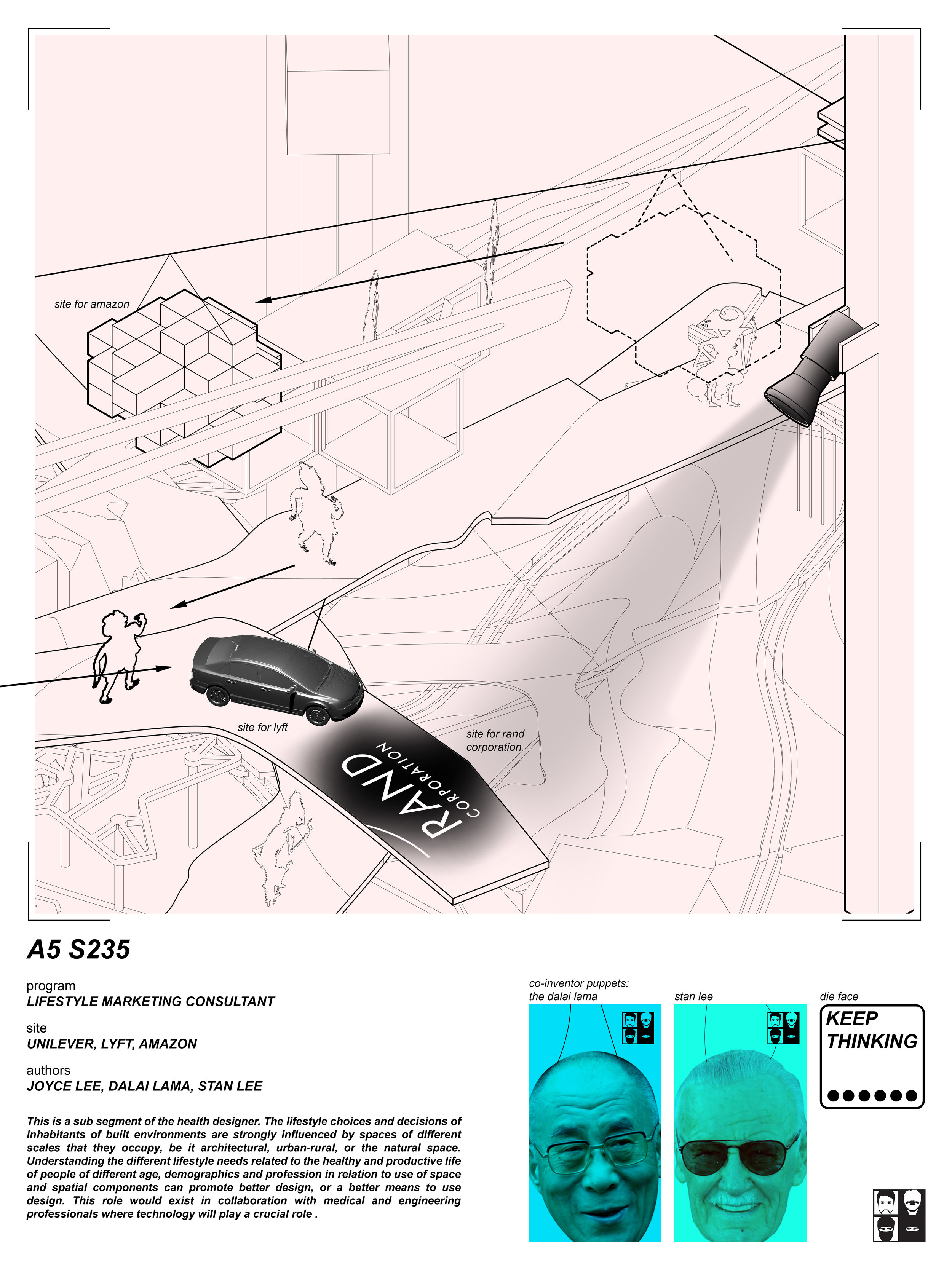
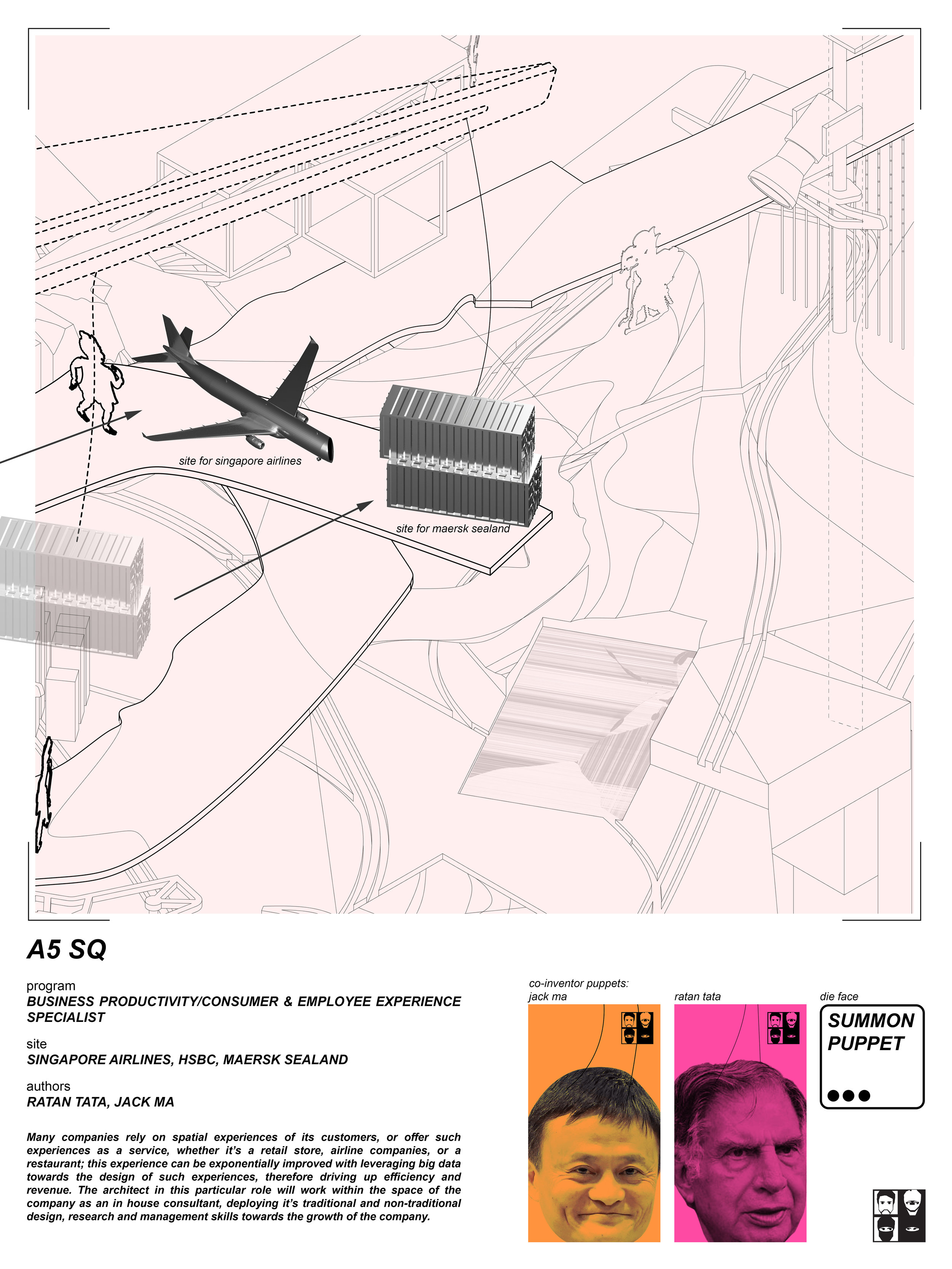
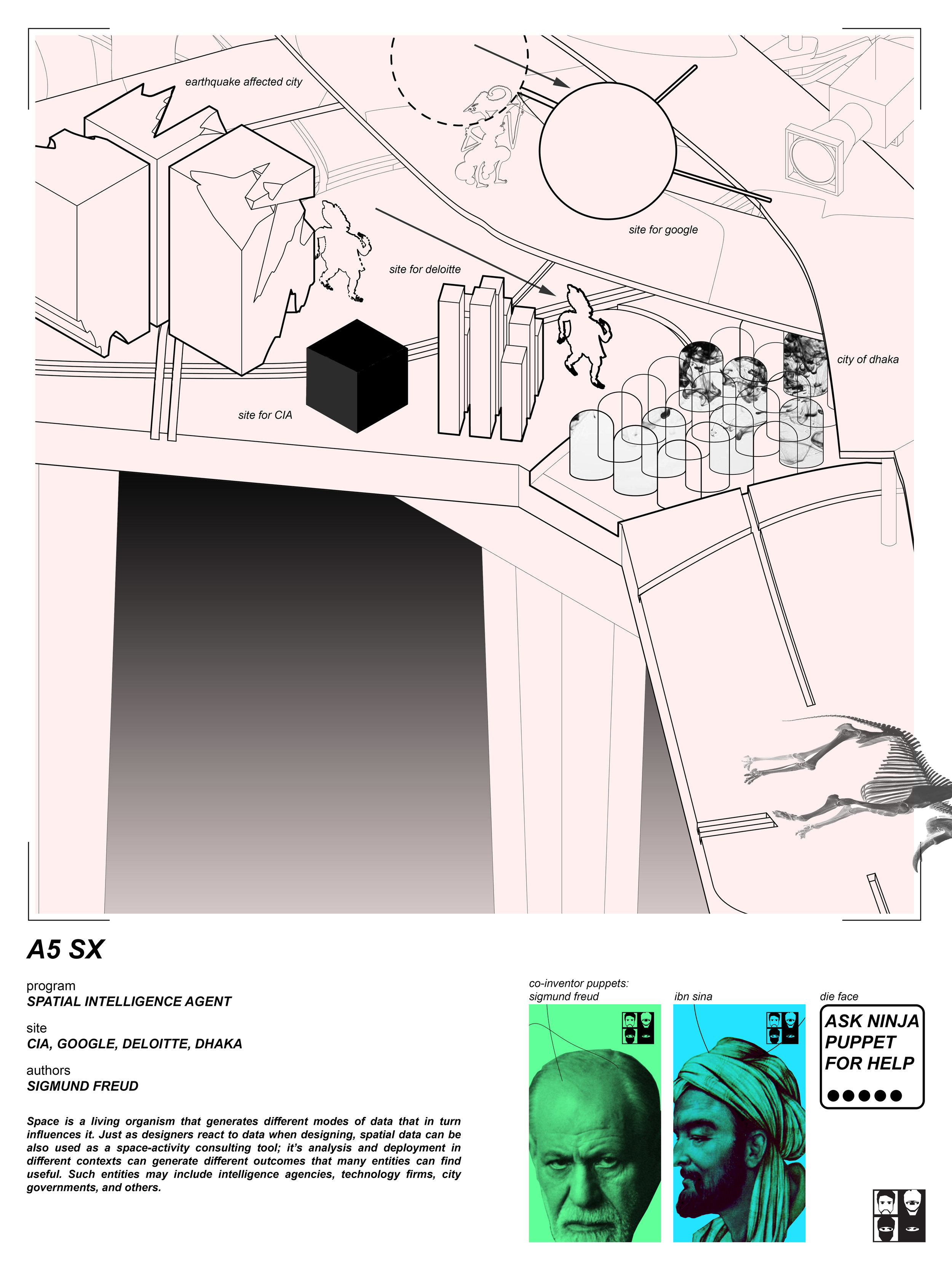
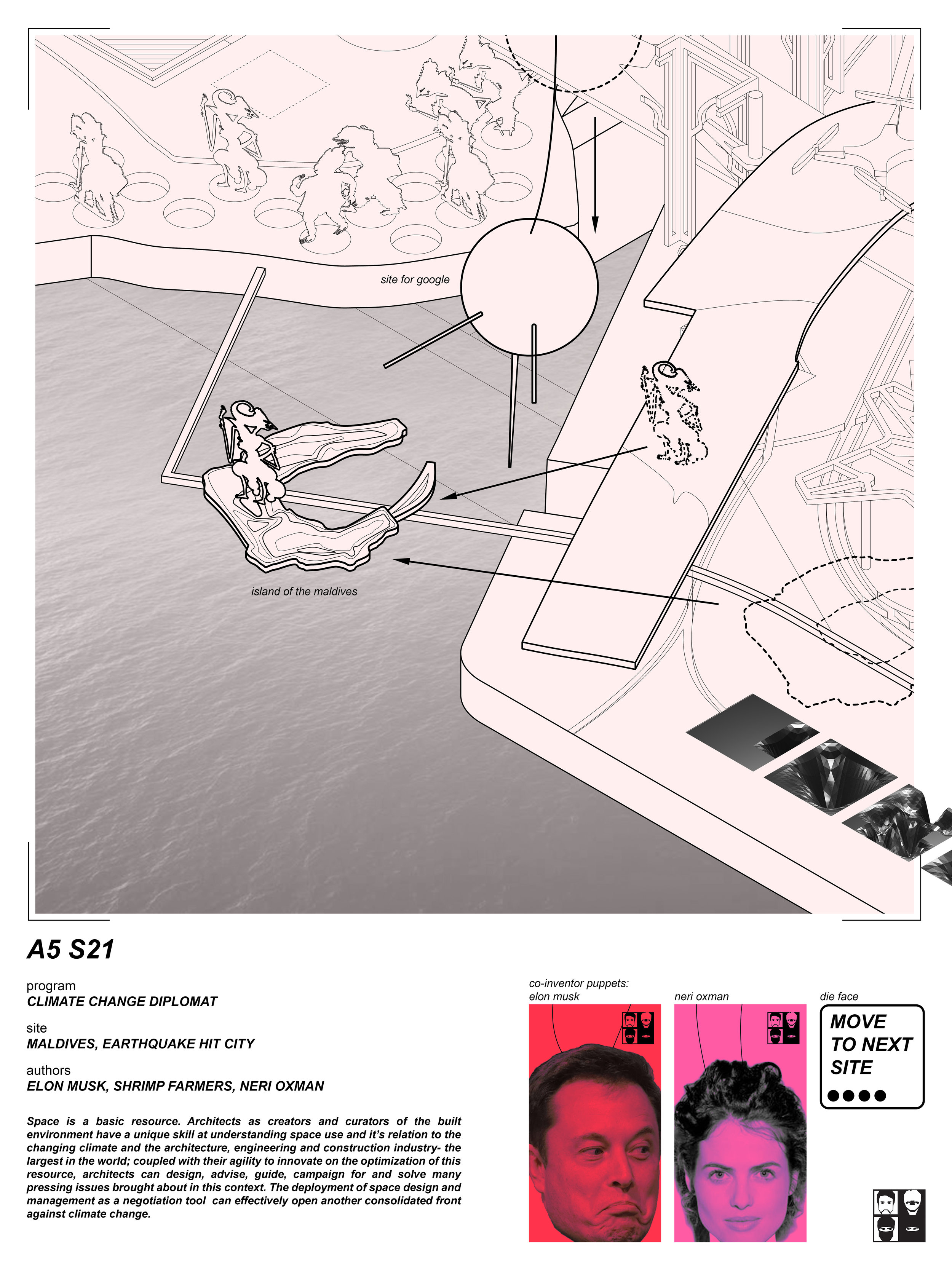
A5: Migration
Objective: Co-invent & collaborate on new value proposition in non-architecture industries and sites of conflict.
The liberated puppets move through this main act of the game where they will encounter different sites of non architecture industries and sites of conflicts. A different die will be used in this act whose faces gives the chance to either move to new sites (scenes), collaborate with a fellow freed puppet, seek help from a guest puppet, or combine 1 or 2 sites. It is hoped that these varied combinations of sites, actors and puppets will lead to new value proposition canvases which the players will fill as they co-invent, collaborate on and brainstorm new roles for themselves towards a solid business case. They will use multiple mechanisms such as elevators, cranes, zip lines, sliders and others to move the sites and characters in this act.







